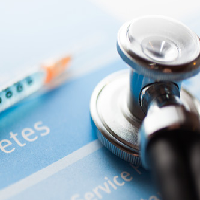Diabetes: Leading Cause of Mortality in South Asian Community
Author by Saira Gillani, ND
What is Diabetes?
Diabetes is a disease that occurs when a person’s body doesn’t make enough of the hormone insulin or can’t use insulin properly. There are 2 types of diabetes. Type 1 diabetes occurs when your body’s pancreas doesn’t produce any insulin. Type 2 diabetes occurs when the pancreas either doesn’t produce enough insulin or your body’s cells ignore the insulin. Between 90% and 95% of people who are diagnosed with diabetes have type 2 diabetes.
Diabetes in the South Asian Community
Type 2 diabetes is one of the leading causes of morbidity and mortality in the South Asian Community. While all ethnic groups are affected, the prevalence of Type 2 Diabetes is extremely high and is continuing to rise rapidly. Innate biological factors, coupled with rapid changes in physical activity, diet, and other lifestyle behaviors are contributing factors in the increased burden of disease in this population. Therefore, we must do all that we can do reduce our sugar and processed carbohydrate intake.
Eating right for diabetes comes down to three things:
What you eat.
When you eat.
How much you eat.
• Doctors recommend a diet to lower your blood sugar. The pancreas simply doesn’t create enough insulin to digest all the sugar, and the blood sugar rises when you have diabetes, so a low-sugar diet helps correct this. Opt for Organic Agave Nectar or Natural Stevia as a sugar substitute. Avoid low calorie sweeteners including sweet and low, equal, and anything that consists of aspartame, as these will cause you to overeat and crave sweets.
• Plan Meals and Snacks with a Glycemic Index. You can either count carbohydrates or use a glycemic index that measures the amount of sugar in foods and snacks. Your goal is to maintain the blood-sugar level at a low, so you need to keep the sugar and carbohydrate level down. Focus on a high protein, high vegetable, low carbohydrate diet. Try avoiding white rice and white bread. Instead, substitute these with brown organic rice, gluten free grain bread, or organic corn tortillas.
• Cut your Portion Size. Eating a few meals over several sittings can be a huge benefit to stabilizing the blood-sugar level. The body has a need for a slower, more constant flow of energy that doesn’t explode all at once. Choose a planned time to eat three meals and three snacks and stick to the plan. Create a schedule and prepare meals and snacks ahead of time to make it easy for you to stick to your schedule.
• Add Fiber. Fiber, like that found in green vegetables, is soluble and is excellent for those with diabetes. Everyone benefits from this type of fiber since it actually slows the absorption of the sugar (glucose) in the intestines.
• Take Supplements: Chromium picolinate: 200 mcg of chromium daily, Organic Chia Seed: 2-3 tablespoons per day as a natural source of fiber, Cinnamon: ½ teaspoon per day.
Saira Gillani, ND Biography
Saira Gillani, ND is the Senior Director of Operations and Naturopathic Medicine at Advanta Total Health. She is Double Board Certified as a Traditional Naturopath and in Nutritional Wellness from ANCB.
Her goal is to educate patients to take charge of their health. Her Expertise include Diabetes, High Blood Pressure, Weight Management, and Rheumatic Conditions. She specializes in nutritional testing and offers many medical tests for food and substance sensitivities, vitamin and mineral deficiencies, etc.
Her Story: Saira was diagnosed with Rheumatoid Arthritis at age 9. She has undergone years and years of excruciating pain and was given many medications. After years of fatigue, pain and suffering, she found that her Arthritis was caused by gluten in her diet. She now has no pain and gives all of the credit to Naturopathy.
Advanta Total Health
“Focusing on Integrative, Holistic Medicine”























